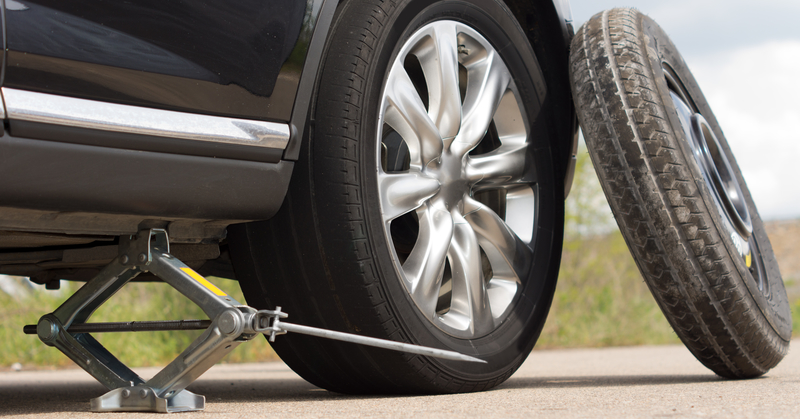Don't Get Left In Cold With Worn Out Spare

A spare tire has one job: Get you to a service station.
Of course, that can only happen if the spare itself is inflated and ready for use.
Some 70 percent of people never check their spare tires for air, according to the Rubber Manufacturer’s Association. The industry group recommends checking pressure on all tires--including the spare--about once a month.
“Temporary tires are often stored under vehicles, in the trunk or somewhere else exposed to the elements,” Dan Zielinski, senior vice president of public affairs for the Rubber Manufacturers Association. “They need to be properly maintained so they are ready when you need them.”
Temporary tires aren’t built as sturdily as the standard tires, he added. They aren’t steel-belted, and they don’t have the same durability and speed capability of a regular tire.
“Trying to use a temporary tire in place of a full-size tire is going to end badly, because it’s just not designed for that,” Zielinski said.
Zielinski said the places they are stored—including trunks, outside and under the vehicle—exposes them to a lot of heat and the elements. Using temporary tires properly and keeping them pressurized ensure that they can be kept for a long time.
What should drivers know about maintaining temporary tires? Zielinski had the following suggestions:
- Limit vehicle speed to 80 kilometers per hour. The smaller size of temporary tires makes driving at faster speeds hazardous.
- Avoid quick maneuvers and cornering wherever possible. Temporary tires simply do not handle as well as full-sized tires. Temporary tires usually a basic tread pattern and can be used in wet surfaces, but the pattern and size is not built for speed or maneuvering.
- Check your temporary tire for information on mileage. In general, temporary tires should not be driven for more than 80 to 160 kilometers.
- Do not use temporary tires as a replacement for full-sized standard tires designed for your specific vehicle. They are intended for emergency use only.